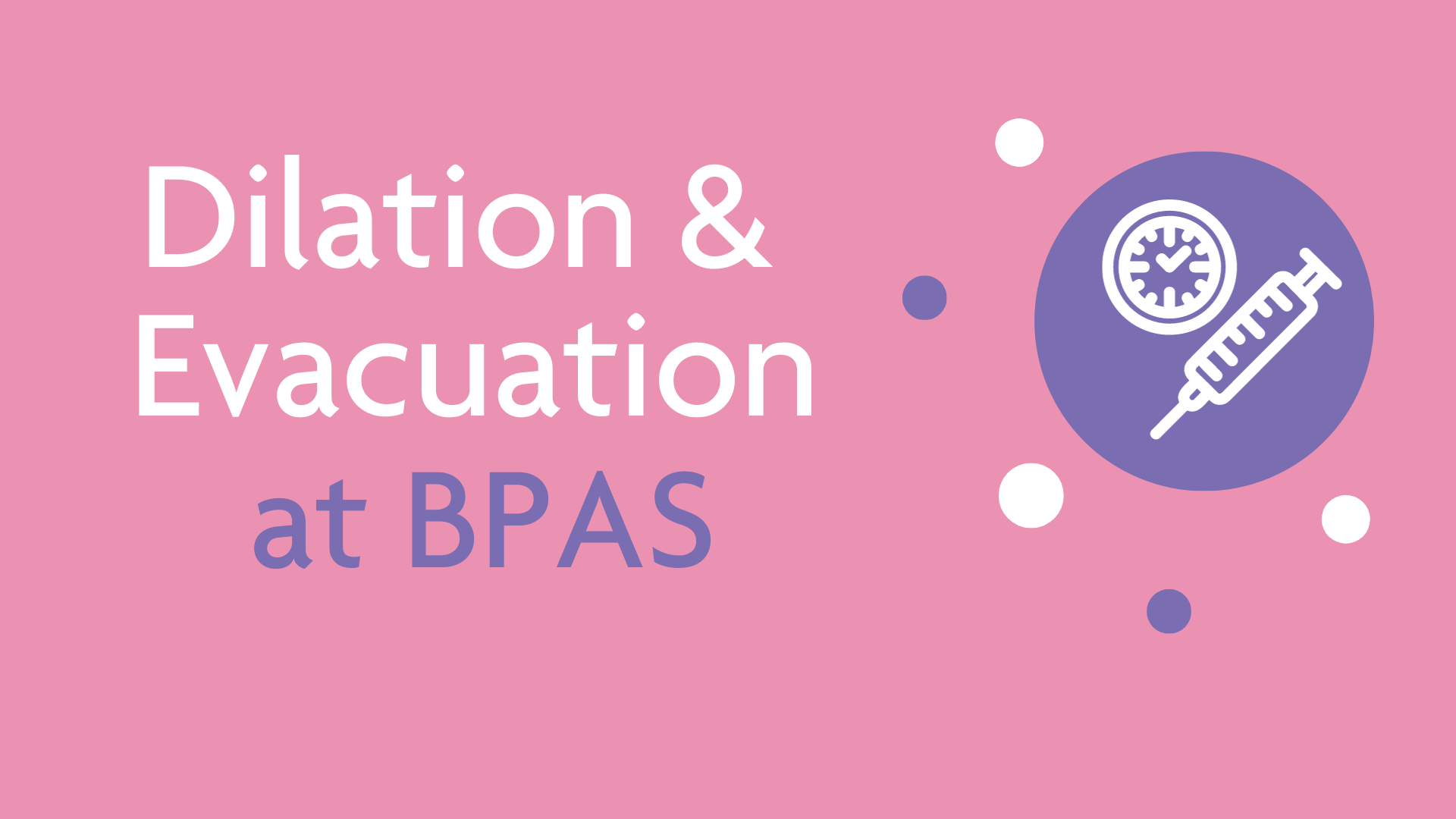
This procedure requires cervical preparation so you should plan to be at the clinic for the whole day.
This method can be used from 14 weeks’ gestation up to 24 weeks’ gestation. Up to 18 weeks it may be under general anaesthetic or conscious sedation. At 18 weeks or above the procedure is done under general anaesthetic.
This method uses instruments and suction to remove the pregnancy. You will need cervical preparation on the day of surgery, or the day before surgery. Before your treatment, please read about cervical preparation and the relevant sedation or anaesthetic options below.

A healthcare professional will show you into the treatment area. You will be asked to lie on a couch with supports for your legs. You will meet your surgeon, and if appropriate your anaesthetist, where you can ask any last-minute questions. Any sedation or anaesthesia will be given before the procedure begins. A nurse will stay with you to support and monitor you throughout.
The surgeon will examine you and place a speculum into your vagina. The opening of your cervix may be stretched with thin rods called dilators. The pregnancy is removed using instruments and gentle suction.
You will not feel pain during this procedure but may feel some discomfort if you have your treatment with conscious sedation. The treatment takes about 10-20 minutes. Afterwards you will be taken to the recovery area and monitored until we consider you are ready for discharge. You will have a light snack before going home and will be given an anti-sickness drug.
Significant, unavoidable or frequently occurring risks
These are usually easy to treat and rarely have any long-term health effects.
- Retained products of conception - where the pregnancy has been successfully ended but some of the pregnancy tissue is left behind in the womb (1 in 800)
- Infection (1 in 2,500 as reported to BPAS but may be higher)
- Unpredictable bleeding after the abortion (variable)
- Pain during the procedure (variable)
- Injury to the cervix (1 in 5,000)
- Psychological problems (variable)
These may require transfer to hospital or surgical procedures, and may have serious long-term health effects.
- Haemorrhage - very heavy bleeding (1 in 800)
- Perforation of the uterus/womb (1 in 2,500)
- Injury to bowel, bladder, or serious injury to cervix (very rare)
Extra procedures that may be necessary
- Repeat surgical abortion or uterine aspiration
- Blood transfusion
- Laparoscopy or laparotomy - operation to look inside the abdomen
- Repair of damage to cervix, uterus, bladder, bowel or blood vessels
- Hysterectomy - surgical removal of the womb (1 in 5,000)
Death is very rarely linked to abortion treatment - less than 1 in 100,000 for all abortions.
I just wanted to say thank you for the treatment, and care that you provided for me at a difficult time. In particular, to the midwife I spoke to, her name was Pat. She was so kind and compassionate and made me feel at ease and really reassured me. I really appreciated her empathy and the level of service that I received was excellent.

